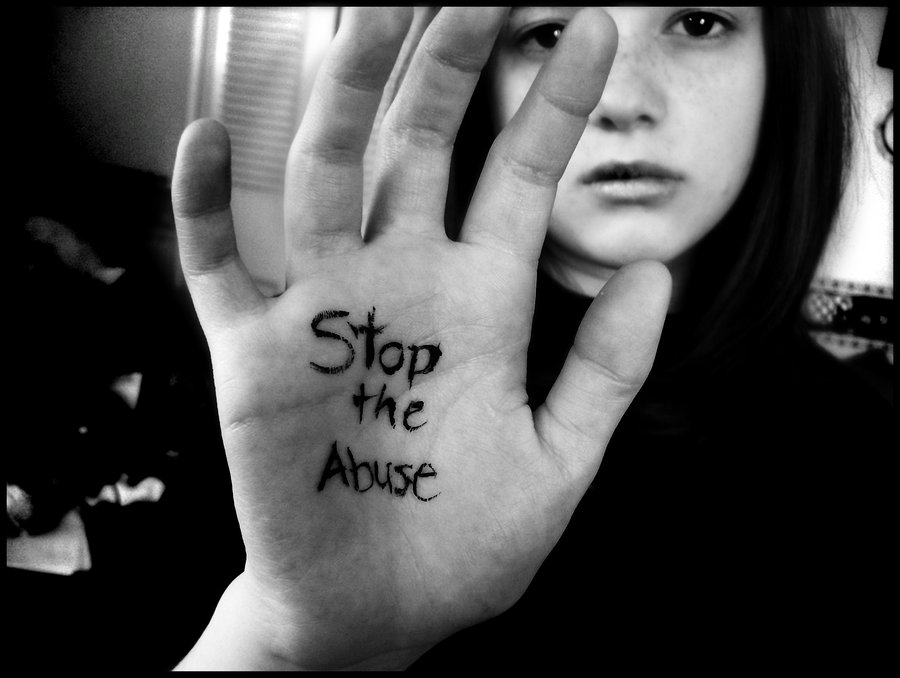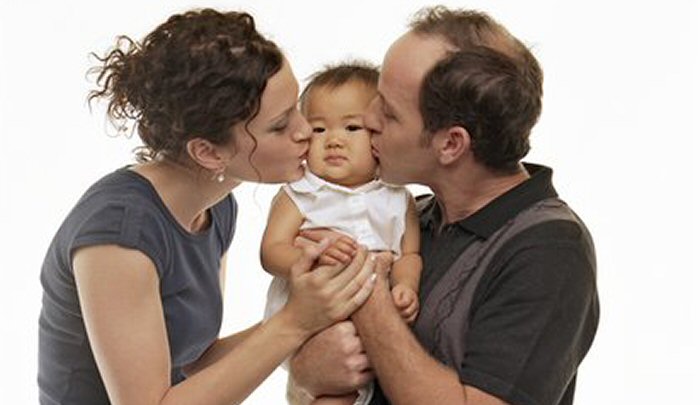Introductory Guide to Hospice and Palliative Care Social Work

By Kaitlin Louie
Hospice and palliative care settings provide medical care, pain management services and treatments, as well as psychological, emotional, social, and spiritual support to patients across the age spectrum who are suffering from severely debilitating conditions or terminal diagnoses. Patients who require hospice care and their families can experience a number of severe hardships, such as depression, anger, and anxiety, intense physical pain or discomfort, financial strain, social isolation, and family conflict.
Hospice social workers help both patients and their families navigate the difficult process of end-of-life planning; manage the mental, emotional, familial, and monetary stressors of debilitating physical illness; understand their treatment plan and be vocal about their needs; overcome crisis situations; and connect to other support services in the area. Hospice workers are advocates for patients and their families, and possess a deep knowledge of what their clients need and what resources are available within and outside of hospice settings to help them.
Hospice and palliative services are delivered, not only at hospice centers, but also through in-home care services and palliative care departments of hospitals. Hospice and palliative care social workers can work in one or more of these settings; for instance, they might conduct home visits to help patients and their families with establishing effective palliative care in patients’ homes, while also providing services to visitors of hospice centers and following up with terminally ill patients who must visit the hospital for intensive medical care.
Hospice and palliative care social work can be a challenging field, as it involves helping individuals through some of the most difficult and stressful times of their lives. However, the rewards of the field can include making deep connections with individuals, learning and celebrating their life stories, and having a dramatically positive impact on patients and their families.
The Difference Between Hospice and Palliative Care

While very much related, hospice and palliative care are distinct from each other in several key ways. Hospice care involves caring for patients who are suffering from an acute terminal illness that has progressed to the point that they have fewer than six months to live. Palliative care is defined as medical treatment that does not seek to cure disease, but rather aims to help patients manage the symptoms of their condition. Hospice care includes palliative care, but palliative care also applies to patients who are not suffering from terminal illnesses and who require non-curative remedies for painful or debilitating symptoms.
Sheila Clifford, LCSW, who worked for over six years at Hospice by the Bay, explained the difference between hospice and palliative care in an interview with OnlineMSWPrograms.com. “Hospice social work and palliative care are closely related and often work together. The palliative care movement is growing and is able to reach patients and families prior to hospice. Palliative care does not require a patient to have a prognosis of six months or less, while hospice does,” she said, “Palliative care provides support to patients and their families during treatment with the hope of alleviating symptom burden. A palliative care social worker might meet with a family during the course of treatment and offer support.”
The simultaneous distinction and overlap between hospice and palliative care means that social workers who work in hospice care by necessity work in palliative care, while palliative care social workers may not work in hospice settings.
Where Hospice and Palliative Care Social Workers Work

Hospice and palliative care social workers typically work in hospice centers, but also conduct home visits and sometimes work with patients in hospital settings. Depending on their work setting, hospice and palliative care social workers may specialize in serving a particular age group, such as pediatric patients or the elderly, or they may serve patients across the age spectrum.
Hospice Centers
Hospices are the primary settings in which hospice social workers work. Hospices provide medical care with an emphasis on pain management, emotional and spiritual support for patients and their families (including individual and group therapy and bereavement counseling), and resource navigation services.
Social workers at hospices help to coordinate the care of hospice patients by communicating with all parties involved in a patient’s care, including physicians, nurses, hospice chaplains, and the patient’s family.
Palliative Care Departments of Hospitals
Palliative care departments in hospitals are another setting in which social workers provide care coordination services, emotional support, and resource navigation guidance to patients and their families. According to the Center to Advance Palliative Care, palliative care departments are becoming increasingly available at hospitals and have been proven to improve patient outcomes. Social workers in these settings typically work with a team of care providers, such as physicians, nurses, medical assistants, hospital chaplains.
In-Home Care Services
Some hospice and palliative care social workers work for companies that exclusively provide home care to patients with terminal or incurable and debilitating diseases. Social workers in these settings help patients and their families set up the proper structures for effective home care and also ensure that clients get the medical, psychological, and social care they need outside of a medical setting in their own homes. For example, they may help clients and their families complete the necessary insurance paperwork to receive in-home care support or equipment, and may communicate clients’ concerns to their medical care providers, and vice versa.
What Hospice Social Workers Do

Whether they work at hospice centers, hospitals, or in-home care services, hospice and palliative care social workers provide personalized support to clients and their families to help them manage the mental, emotional, and social challenges of terminal illness. Sheila Clifford, LCSW explained in an interview with OnlineMSWPrograms.com how hospice social workers tailor their services and support to each patient and family member in their care. “Hospice social workers wear many hats and their role depends on the needs of each family and patient,” she explained, “Some patients and families need assistance with caregiving, logistics of where the patient will live during their final days or assistance with documentation. Other families/patients are in need of processing their terminal diagnosis and the process that leads to their hospice admission.”
Hospice social workers’ core responsibilities include conducting psychosocial assessments, coordinating care, providing counseling and psychotherapy, intervening in client crisis situations, and educating patients and families about their treatment plan and the resources and support systems that are available to them.
Psychosocial Assessments
Hospice and palliative care social workers conduct psychosocial assessments of patients and their families in order to determine their psychological, emotional, spiritual, and social needs; this information is very important for the larger hospice and/or palliative care team to develop an effective and compassionate care plan. Through their completion of psychosocial assessments, hospice and palliative care social workers gather the following information about their clients:
- Past and present medical condition(s)
- Previous and current treatment plans and health care team, including current primary care physician, specialized doctors (ex. oncologists, pulmonary physicians, etc.) nurses, and/or home care assistants
- Their mental and emotional health, including past and present psychological, emotional, and behavioral conditions that affect their physical health (ex. depression, anxiety, substance abuse, etc.)
- Any and all social, cultural, financial, and familial considerations, including socioeconomic hardships, family conflicts, engagement and/or disengagement with friends and the community in general, etc.
Upon completing their evaluation of patients’ psychological, emotional, and behavioral health, as well as their familial, social, and financial situation, hospice and palliative care social workers write up recommendations for the types of psychological and social support a patient and his or her family may require. They may also use the information they gather to conduct risk assessments, which are specialized assessments aimed at determining the likelihood that a patient will experience a severely negative outcome in their current situation and state of health.
Care Coordination
One of the most important responsibilities that hospice social workers have is coordinating the care of patients in collaboration with a larger team of medical and human service professionals. Care coordination is defined as the delivery of effective medical, psychological, and/or social care through the organization of primary and secondary care providers. With their knowledge of systems of care and support both within medical settings and the larger community, hospice and palliative care social workers are often the point of contact between different care providers, as well as the liaison between clients and their treatment team.
Hospice and palliative care social workers also play an important role in patient intakes and discharges. During the intake process, they gather crucial data from patients upon their enrollment in a care program (through the psychosocial assessment), orient patients and their families to the hospice or palliative care environment, and communicate with the treatment team regarding patients’ ongoing needs.
Counseling and Psychotherapy
Hospice and palliative care social workers also provide emotional support, counseling, and psychotherapy to patients and their families who are experiencing psychological and emotional difficulties in the face of terminal and/or debilitating illness. Social workers may employ a combination of clinical social work modalities to help their clients evaluate and manage their thoughts and emotions, as well as overcome various behavioral challenges. Examples of modalities that social workers may use in their work with clients are mindfulness based stress reduction, cognitive behavioral therapy, dialectical behavioral therapy, supportive psychotherapy, expressive arts therapy, and storytelling therapy. (For more information on the therapeutic modalities that hospice and palliative care social workers may use in their work with patients and their families, please refer to our Guide to Clinical Social Work.)
In her interview with OnlineMSWPrograms.com, Charis Stiles explained the therapeutic methods she used with geriatric patients and individuals in hospice settings at Odyssey Healthcare and the Institute on Aging. “Counseling and case management are the primary forms of intervention as well as life review, grief support, and bibliotherapy can also be helpful,” she said, “Life review is essentially actively listening to individuals tell the stories of their lives; many older clients do not get to share the wisdom and lessons they’ve learned over the decades. Many clients, like clients of any age, need to tell the stories of their experiences in order to integrate and explore themes, come to new insights, and better understand the path they have taken.”
Crisis Intervention
Social workers in hospice and palliative care settings must also be prepared to intervene and provide emergency psychological support when clients and/or their loved ones are experiencing mental, emotional, social, or familial crises. Crises are generally defined as events that cause a degree of distress that exceeds an individual’s capacity to cope in the short term; qualifying events vary from client to client, but can include the unexpected advancement of a particular condition; traumatic family conflicts; instances of physical violence, neglect, or verbal abuse that result in trauma; or the development of suicidal desires in a client.
During these situations, hospice and palliative care social workers provide immediate psychological support and counseling, while also completing care coordination services by informing the rest of a client’s treatment team so that they can collaborate to effectively address the patient’s distress.
Patient Education and Resource Navigation Services
Hospice and palliative care social workers help patients and their families understand their treatment plan and the processes involved in hospice and palliative care. “Hospice social workers also educate,” Ms. Clifford noted, “Many families have never experienced a death and need constant education around end of life issues and what to expect as their loved one is declining. Hospice social workers will walk the family through decision making along with the assistance of their nurse and/or MD.”
Hospice and palliative care social workers also help patients and their families navigate relevant resources and assistance that are available to them. For example, for patients who qualify for Medicare or Medicaid, social workers help them navigate the process of applying for benefits. In addition, social workers help their clients connect with local resources, such as cancer or terminal illness support groups, pro bono counseling services, and religious communities. Social workers’ resource navigation services are also an important part of patients’ discharge plans, as these services help ensure that patients and their families receive the support they need even after leaving palliative care.
The Challenges and Rewards of Hospice and Palliative Care Social Work

Hospice and palliative care social work is a very challenging field, as the daily work involves helping patients and their families cope with severe illness and death. The close and regular interactions that hospice and palliative care social workers have with patients and their families can prove to be both rewarding and incredibly challenging, especially during the moments when patients must face and prepare for their own mortality. Ms. Clifford explained to OnlineMSWPrograms.com how working with pediatric hospice patients was particularly challenging for her. “Working with children around death can be a difficult task. Some families choose to not tell the kids about their diagnosis or prognosis but so many children are perceptive and recognize a sudden shift in their treatment course,” she said, “There is one family who will always sit with me, as the patient was the same age as my son. Same toys in his room and the similarities were startling.”
Despite its challenges, hospice and palliative care social work can also be a deeply rewarding field for the opportunity it provides to form meaningful connections with people in need, and to have a concrete and dramatic impact on their well-being as they face some of the most difficult moments of their lives. In addition, hearing and participating in the life stories of patients and their families can be a very meaningful experience. “One of the most incredible parts of this job is listening to patients tell their life story which is often referred to as ‘life review,’” Ms. Clifford said, “Patients recall all of the occurrences in their life…the pain, joy, love and triumph.”
Being a voice and a staunch advocate for vulnerable patients and families can also be deeply rewarding. “I have had so many rewarding experiences with clients–so many frail, dying individuals I’ve had the honor of working with and being present for, so many people I’ve been privileged to advocate for when they were not able to speak for themselves, so many grieving families I’ve been able to comfort and counsel,” Ms. Stiles said, “It’s been really incredible how many clients have really touched me.”
Advice on How to Become a Hospice or Palliative Care Social Worker

Hospice and palliative care social work requires considerable academic, professional, and emotional preparation. Due to the complex nature of hospice and palliative care patients’ medical conditions, and the need to provide intensive care coordination and therapeutic services, social workers in hospice and palliative care settings typically require an MSW from a CSWE-accredited institution (though social workers who hold a BSW may be able to work in entry-level hospice and palliative care roles under supervision).
Ms. Stiles advises social work students interested in working with hospice and geriatric patients to take as many relevant classes as possible during their MSW program. “I highly recommend taking whatever gerontology-focused classes your program offers. A basic course in death and dying is a wonderful asset, even just for you personally,” she said.
Social work students who are interested in becoming hospice social workers should also proactively seek field internships in medical, hospice, and/or palliative care settings during their undergraduate and graduate work. If they are unable to obtain internships in such settings, they should try and find professional opportunities that can give them experience working in health care settings. For example, Ms. Clifford explained to OnlineMSWPrograms.com how a job that she took outside of her MSW field practicums sparked her interest in hospice social work. “I worked as a unit secretary in the Intensive Care Nursery while completing my schooling,” she said, “This experience transformed my professional goals entirely. The exposure to the hospital, clinical terms and education around diagnosis strongly assisted in my ability to gain a position as a medical social worker.”
Ms. Clifford recommends that social work students seek volunteer opportunities in hospice and palliative care settings. “Also look for opportunities to volunteer at a local hospice. This experience will allow you to be part of the team and may lead to an internship or even job,” she advised, “Hospice volunteer programs typically have intense training programs that all will allow you to test out the opportunity.”
Students who wish to become hospice and/or palliative care social workers should build and maintain a self-care plan so that they have a way to recharge from the demands of this field. In addition, they should work to establish social support systems during and after their MSW program to ensure that they have friends, colleagues, and family members who can help them manage the emotional burdens that come with working with terminally ill patients and their families. “I tend to run to relieve stress,” Ms. Clifford said when describing her own self-care plan, “Also having incredible colleagues is so helpful and supportive. Not many people lose patients on an almost daily basis and so it is important to be able to process these losses with people who can relate to that experience.”
Hospice and palliative care social workers’ mission is to help patients and their families manage incredibly difficult situations with dignity and peace of mind. Through adequate academic and professional training, a solid network of friends and family, and a sound self-care plan, social workers in hospice and palliative care settings can achieve this mission while building a sustainable and fulfilling career.







